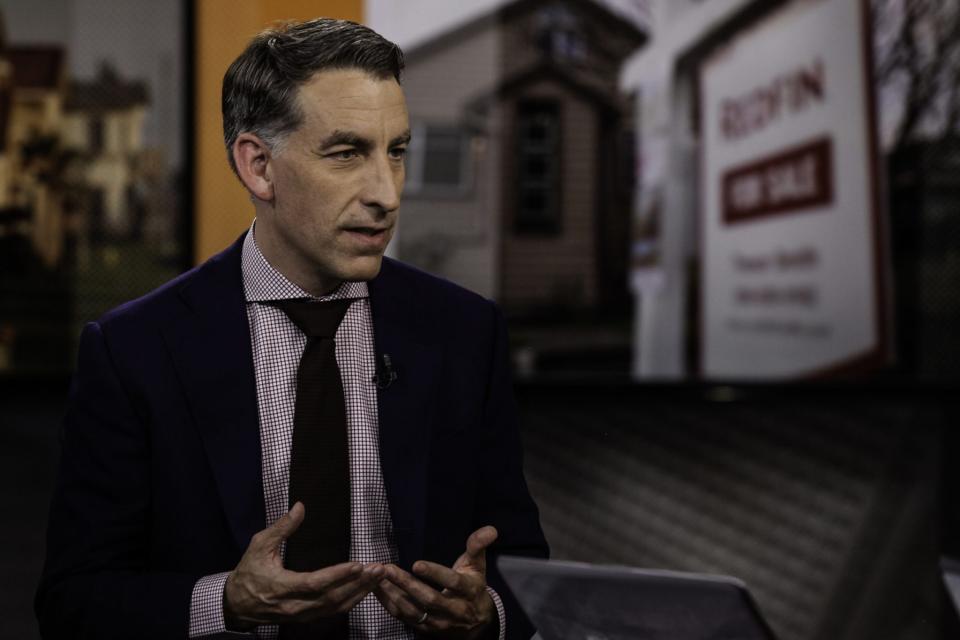Top real-estate CEO sees decades of housing pain ahead: ‘What the Fed did will have a 30-year tail on it’

The Federal Reserve has a dual mandate: maximum employment and price stability. When inflation began creeping up (eventually hitting a four-decade high), the Fed took action. The Fed raised interest rates 11 times in less than two years, and as a result, mortgage rates skyrocketed. The historically low mortgage rates people were used to, were gone. So anyone who locked in a below-market rate, or were simply mortgage free, held onto their homes because to sell would mean giving up an insanely low rate that may never return.
What that’s done is exacerbate an existing housing supply crunch. The country is missing anywhere between two million and seven million homes. The lock-in effect only made that worse by curbing for-sale inventory, despite there being some demand. The housing market froze, and existing home sales fell to their lowest point in almost 30 years. Things have improved since, but we’re not in the clear by any means, and there will likely be reverberations felt across the housing market for decades, by one chief executive’s prediction.
“What the Fed did,” Redfin’s CEO Glenn Kelman said, “will have a 30-year tail on it. There’s going to be low supply for a long time to come unless America really gets [religious] again about building houses.”
In an interview with Yahoo Finance, Kelman mentioned that supply went up for the first time in eight months in February; he called it a “tiny break in the inventory logjam.” And he does see that continuing to improve.
“We need more listings, especially of single-family homes,” he said. “Consumer demand is still strong enough that prices keep going up. Home affordability is the big issue for almost every homeowner and every potential homebuyer. We need more supply.”
So how far do mortgage rates need to fall until we get that increase in much-needed supply?
When they drop from 7% to 6%, and then 5%, it’ll unlock more inventory, Kelman said. But there are also a number of people who deferred their plans, and they can only wait so long. (The average 30-year fixed mortgage rate is currently 7.11%).
“Many of the customers that we’re talking to today still don’t want to give up their 30-year mortgage at 2.5% or 3%, but they’ve just outgrown the house and they finally have to let go,” he said. “I do think that even if interest rates don’t come down significantly, we are going to see a modest uptick in inventory—but to see a big gain, you’re going to have to see a real drop in mortgage rates.”
Still, supply is a much larger and longer-term issue that won’t be solved once mortgage rates fall. The only way to really solve it is by building more homes. Fed Chair Jerome Powell said as much while testifying to Congress earlier this month. “The housing market is in a very challenging situation right now,” Powell said. “Problems associated with low rate mortgage [lock-in] and high [mortgage] rates and all that, those will abate as the economy normalizes and as rates normalize… But we’ll still be left with a housing market nationally, where there is a housing shortage.”
Kelman mentioned recent legislation in California that pushed for more accessory dwelling units and fewer environmental reviews. (We know the California Environmental Quality Act has been used time and time again to block development in the state). “That was a breakthrough that has now been mirrored in the federal government,” Kelman said, referring to President Joe Biden’s State of the Union address earlier this month, where he mentioned cutting red tape to build housing.
The chief executive touched upon the Biden administration’s recently released housing plan too, which includes a tax credit for buyers and sellers (which reveals that Biden knows nobody wants to sell their home right now). Kelman said former President Barack Obama did something similar when the country was at the “absolute bottom of the Great Financial Crisis,” and it had a meaningful effect on the housing market, to the extent that when it expired, there was a blip. That being said, he does believe Biden’s legislation would have an impact if it passes—but that’s the hard part.
“I wouldn’t bank on any legislation being passed right now,” he said. “The government is so dysfunctional, but I still think it’s very positive that we’re having this conversation at the federal level—definitely at the local and state level, it has been a massive issue.”
Both Democrats and Republicans want to build housing, Kelman said, which in itself is good news for the housing market, and “millennials who really need a place to live.”
This story was originally featured on Fortune.com
